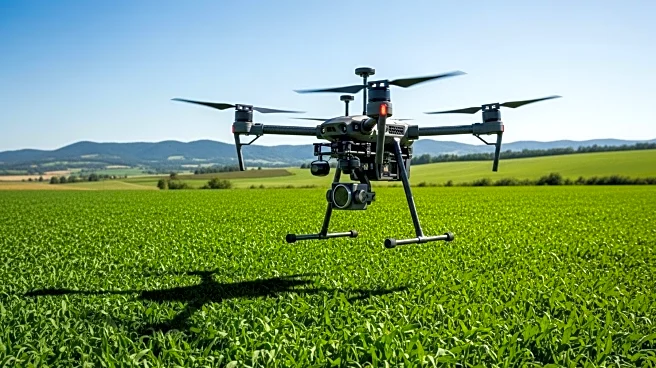What is the story about?
What's Happening?
The global oyster farming market is projected to reach USD 15,146.95 million by 2032, growing at a compound annual growth rate (CAGR) of 5.68%. This growth is fueled by increasing seafood consumption and a rising interest in sustainable aquaculture practices. Oyster farming serves dual purposes: providing a high-demand seafood delicacy and contributing to environmental restoration through water filtration and marine ecosystem improvement. The market has seen a shift towards traceable and responsibly farmed seafood, enhancing its appeal. Key regions such as North America, Europe, and Asia Pacific are leading the market, with emerging markets adopting advanced aquaculture technologies to improve yield and reduce environmental impact. The integration of oyster farms into eco-tourism strategies is creating additional revenue streams and raising public awareness about sustainable seafood practices.
Why It's Important?
The expansion of the oyster farming market is significant for several reasons. It supports coastal economies by providing jobs and promoting sustainable seafood practices. The industry's growth aligns with global sustainable development goals, offering an environmentally friendly solution to meet the increasing global demand for protein and seafood products. As consumer preferences shift towards sustainably sourced products, oyster farming gains a competitive edge, particularly in regions with favorable regulatory frameworks. The market's growth also reflects broader trends in consumer behavior, with a 30% increase in demand for sustainably sourced seafood over the past five years. This shift not only benefits the environment but also enhances consumer trust and brand value for producers.
What's Next?
The oyster farming industry is expected to continue its growth trajectory, driven by technological advancements in cultivation techniques and government support through favorable regulations and subsidies. Emerging markets in Southeast Asia and the Middle East present significant opportunities for expansion, supported by increasing consumer awareness and disposable incomes. The development of value-added products, such as oyster-based health supplements and cosmetics, offers new revenue streams and market differentiation. Collaborative ventures between technology providers and oyster farmers are likely to enhance production efficiency and sustainability, further solidifying the industry's position in the global market.
Beyond the Headlines
Oyster farming's role in climate mitigation strategies is an important but less obvious implication of its growth. By supporting biodiversity and combating coastal erosion, oyster farming contributes to environmental sustainability. The industry's expansion into eco-tourism and culinary experiences not only boosts profitability but also fosters a deeper connection between consumers and sustainable food practices. As the market continues to evolve, the focus on innovation and collaboration will be crucial in overcoming challenges such as high capital costs and environmental risks.
AI Generated Content
Do you find this article useful?













